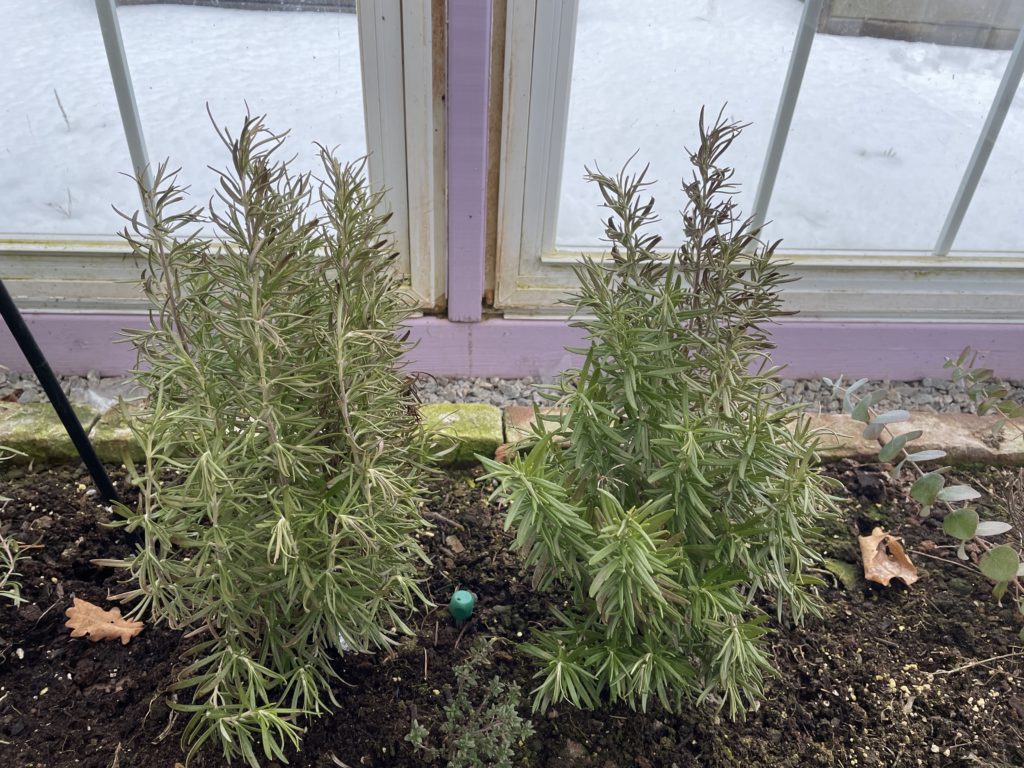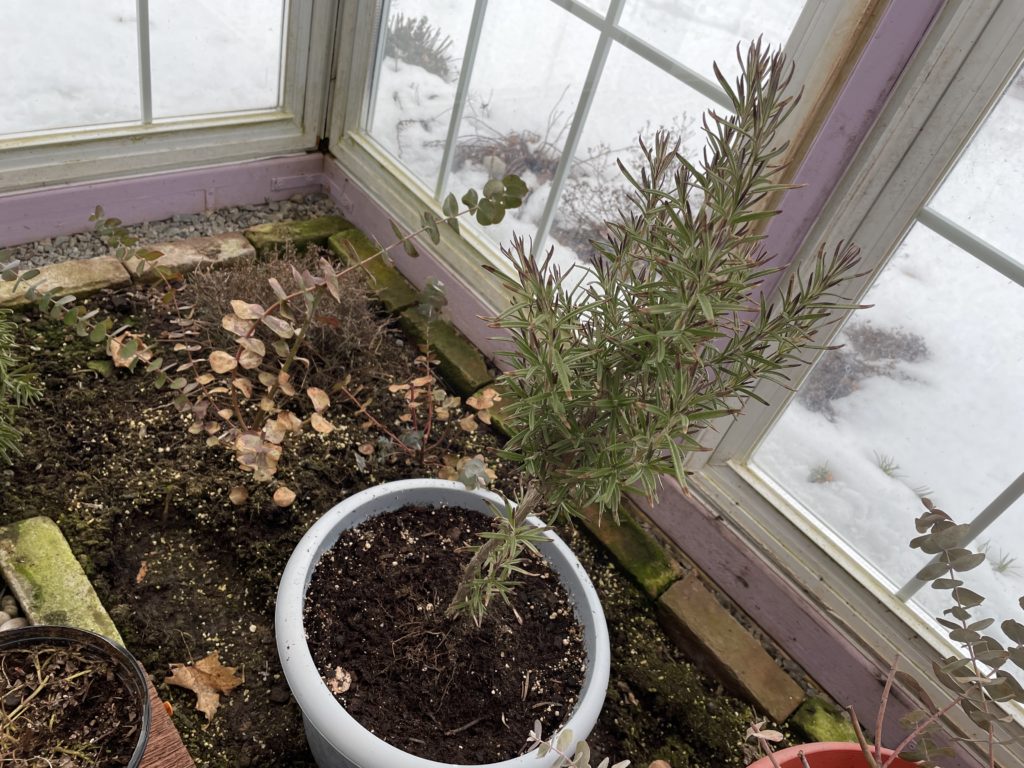Rosemary is a wonderfully aromatic Herb that can be used in cooking, tea and cut flower displays as well. It holds it’s colour and shape outdoors even in cold temperatures of -10º Celsius (14º F). Any colder than that, and you will want to give it some winter protection. I’ve actually seen Rosemary survive closer to -20ºC (-4º F) but only with complete snow cover to shield it from the extreme temperatures.

Rosemary is a mediterranean herb which means it prefers loose, well-drained soil that is not too rich. When planting it in the garden, choose a spot with as much direct sun as possible (6 hours will do, but 8 or more is better). Rosemary hates having wet feet, so plant it away from any low-lying spot that might be prone to staying wet after a rain, or the downspout from your rain gutters. If you have heavy clay soil, you can work in some shredded leaves or straw to add organic matter into the soil. Mound up the soil slightly around the plant so water will not accumulate around the stem. Water it well when planting and then only every two weeks if there hasn’t been any significant rainfall.
If your new plant doesn’t seem to be growing much in the few weeks after you plant it, don’t worry! What you can’t see is the root growth happening below the soil level. Top growth will only happen once it has a strong root system to support it. Don’t be tempted to water it often thinking that will help it establish though, those roots need to grow down deep looking for moisture and they won’t do that if you are constantly soaking the surface.

Some varieties of Rosemary are more cold tolerant than others, so check the plant tag to see what zone it is rated for. If you are one zone colder than your plant is rated, try heaping straw or mulch around the base and wrapping it in fleece for the worst of the winter weather. If a heavy snowfall covers it as well, so much the better. If you have a greenhouse of some kind, you can keep it planted into the ground inside with no additional protection. A good rule of thumb is that an unheated greenhouse will be one zone higher than the outside, and a second layer of protection (like wrapping with fleece/mulching) INSIDE the greenhouse offers two zones higher.
I hope this encourages you to try growing rosemary as a perennial even if you live in a colder climate! It grows slower than some of the herbaceous herbs but will grow into a large shrub given the right conditions. After all, the best thing about growing your own herbs is being able to use them in abundance!
Happy Growing!
-Nicole